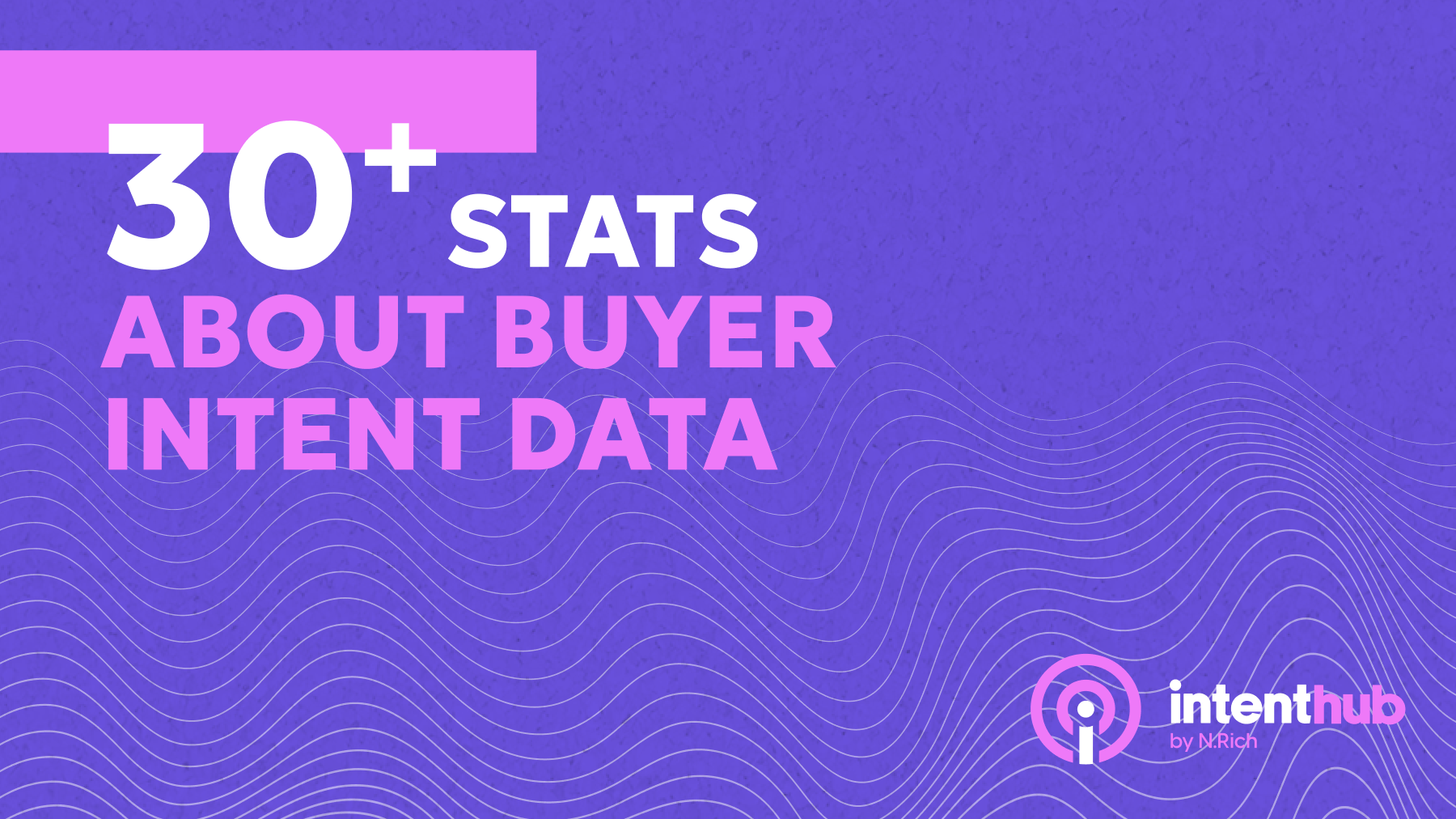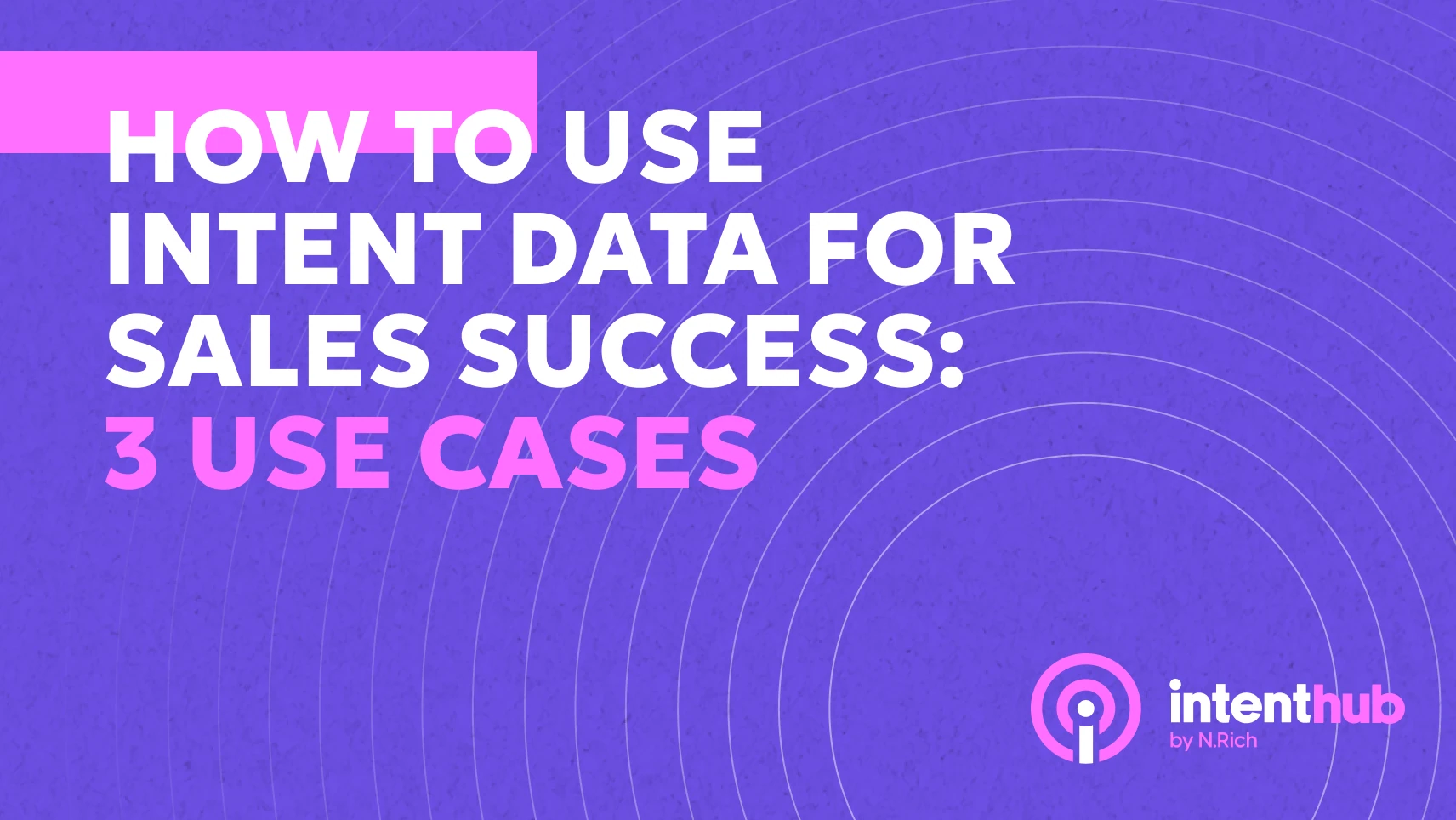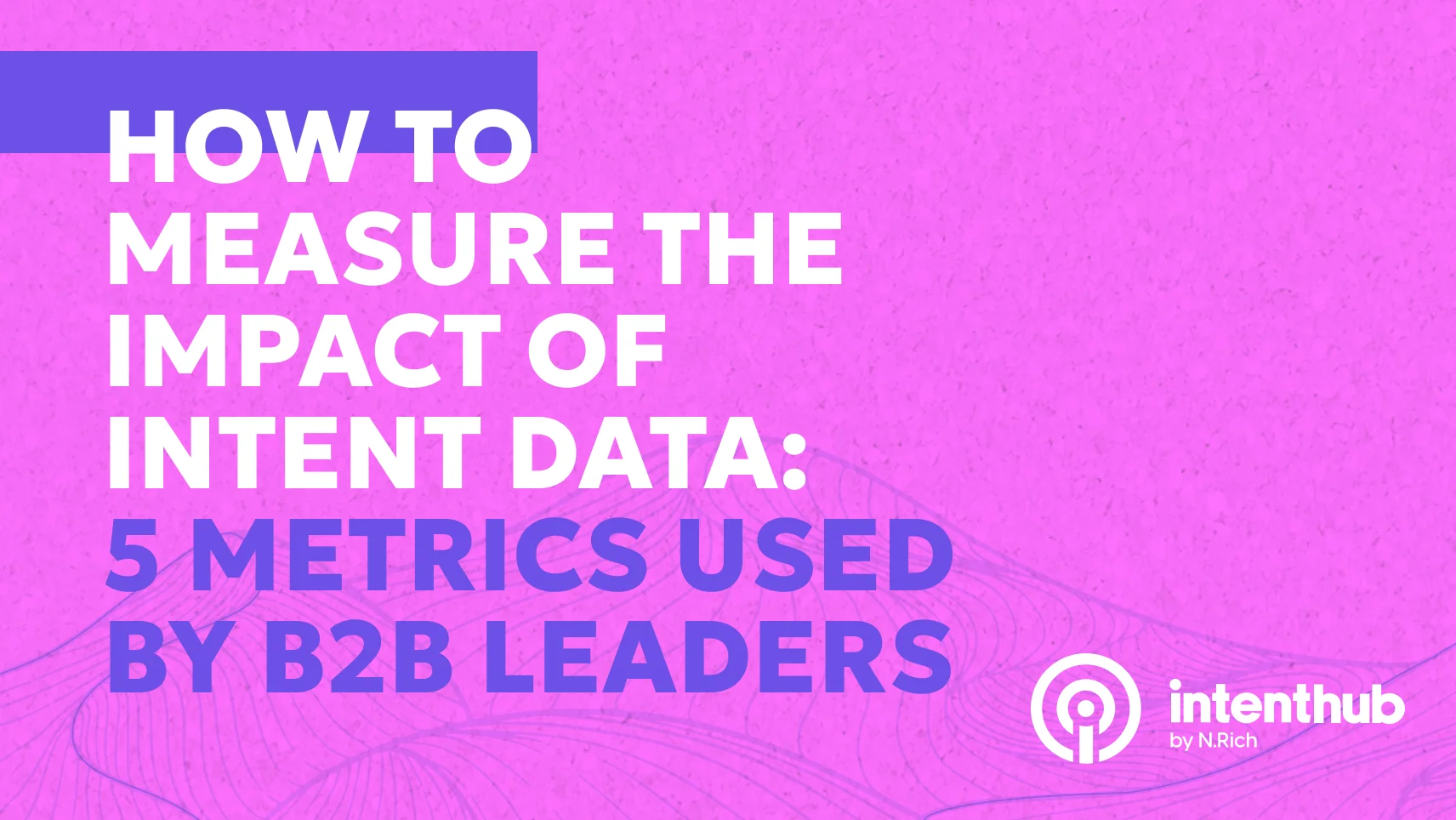
Marketers are constantly on the hunt for the strategies that can deliver real results. Amidst the buzz, one term has been making waves in marketing circles: intent data.
Unfortunately, intent data has often been shrouded in confusion and misconceptions, with only a few truly understanding its potential and how to effectively utilize it.
However, there's no need to fret.
In this article, we will dive deep into the world of intent data, with real examples of how top marketers are leveraging its power.
Types of Intent Data Marketers Can Use
Let’s first define the basics.
There are 2 types of intent data marketers can use:
- First-party intent data
- Third-party intent data
First-party intent data
Examples:
- Website visits
- Ad clicks and impressions
- Comments and likes on your social media pages
First-party intent data is collected and analyzed from a company's own digital properties or platforms that allow access to analytics data. It can be their website, mobile app, social media page or advertising platform (although not all of those platforms provide analytics at the company level).
This data provides insights directly from the source and can help marketers understand their prospects' level of interest, buying habits, and preferences.
With the use of powerful tools and software, marketers can efficiently collect, organize, and analyze this data to optimize their marketing strategies and create highly targeted and personalized campaigns.
Third-party intent data from data co-ops
Examples:
- IntentHub
- Bombora
- Zoominfo
Third-party intent data from data co-ops is collected and analyzed from various external sources, such as social media platforms, ad networks, and other websites that aren’t directly related to a company's business.
Although this type of data may be less reliable than first-party data, it can still provide valuable insights into audience behavior and interests, including identifying new prospects, expanding reach, and targeting specific audience segments.
Now that you know the basics, let's take a look at some of the ways you can leverage intent data for marketing.
1. Understand your ICP & TAM
Ideal Customer Profile (ICP) is a crucial concept in marketing that defines the characteristics of the ideal customer for a particular company.
It is based on a set of criteria that vary from company to company, as each company is different and each company's "ideal" customer is different.
Here are some examples of ICP definition:
- US-based tech companies, mid-market (50-250 employees), using HubSpot as the CRM
- SaaS companies with more than 20 sales reps, based in Europe, APAC, and MENA
- Small SEO agencies (up to 10 people) specializing in e-commerce
Smart marketers leverage intent data to make sure their ICP is accurate and up-to-date. Here's how:
Using third-party intent data tools like IntentHub can help you unveil the exact companies that are interested in specific topics, such as Marketing Automation or Lead Generation.
 Get a list of companies and analyze what they have in common - this can be a foundation for your search.
Get a list of companies and analyze what they have in common - this can be a foundation for your search.
Furthermore, tools like G2 Buyer Intent Data can give you insight into which companies are visiting your competitors and category pages.
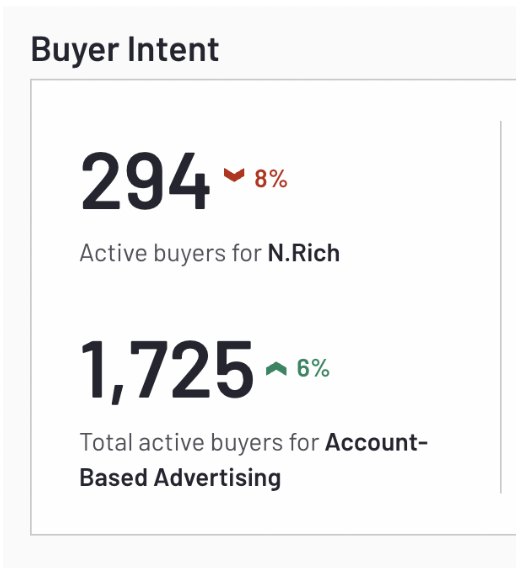
This is a great way to understand which companies are looking into your category and competitors - and also assess potential demand.
2. Launch ABM Programs
Stirista ABM research says that 70% of B2B digital marketing leaders plan to invest in Account-Based Marketing (ABM) in 2023.
Impressive statistics, right? But, do you know what's one of the top reasons organizations want to implement ABM?
It's the ability to benchmark buyer intent at the account level.
However, not all intent data tools are the same. Some are better than others, so it is important to carefully evaluate the different options and choose the one that best fits your needs.
To help you out, here are a few things to consider when choosing an intent data tool for your ABM efforts:
Integrations
For buyer intent insights to be actionable, they need to be easily accessible which means it's important to choose a tool that integrates well with your existing Customer Relationship Management (CRM) system. Additionally, you also want to check if the tool integrates with advertising platforms like LinkedIn or Facebook for automated campaign management.
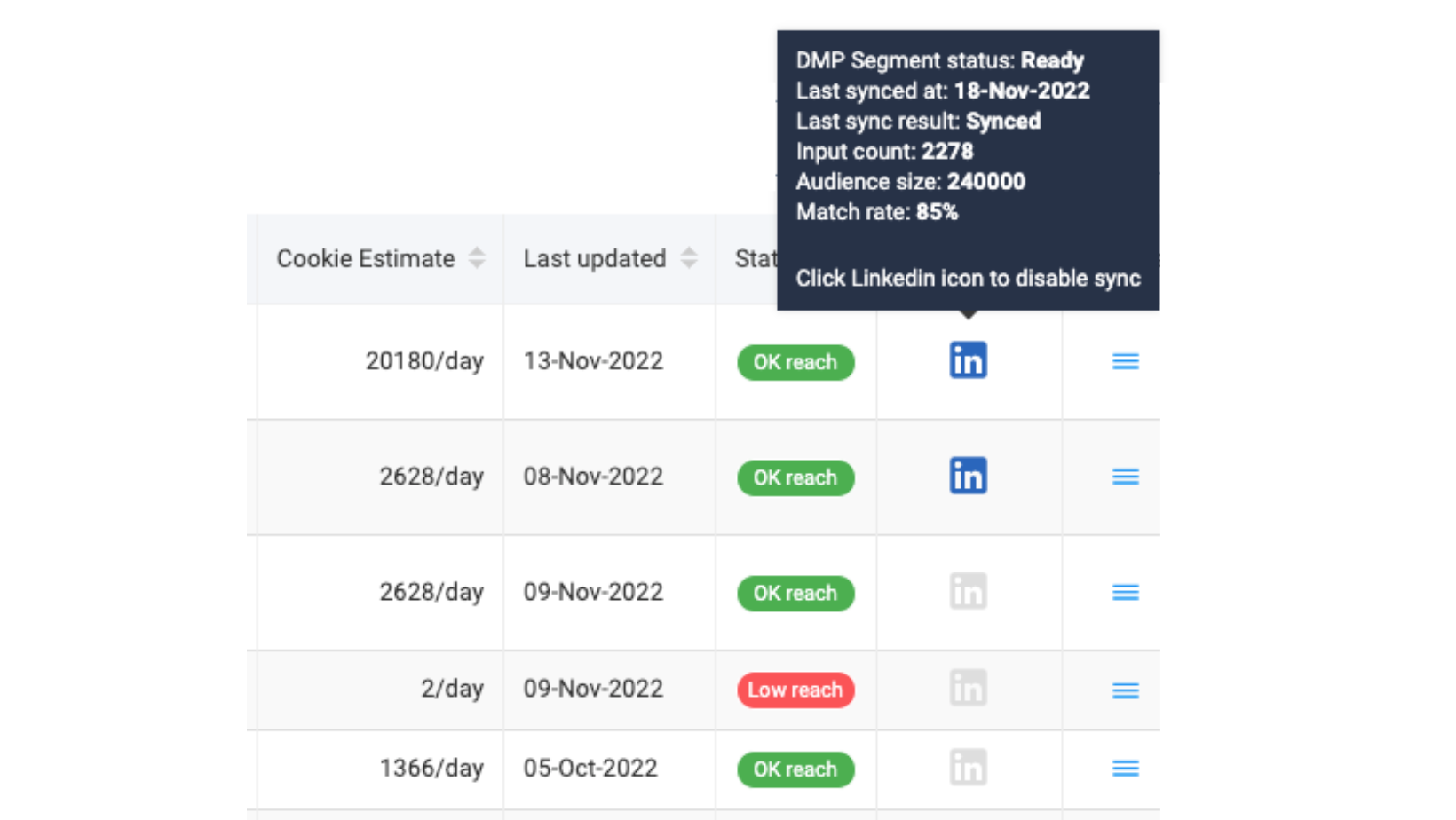
Types of Data Available
Different intent data tools offer different types of data. So, consider the specific types of data that would be most relevant for your ABM strategies, such as:
- Visitor identification tools
- Review platforms
- Third-party data integrators
Read our overview of 18 buyer intent data providers to get an idea of your intent data tech stack.
Implementation Timeline
Keep in mind that implementing a new intent data tool may require time and effort. Some tools may take weeks or even months to start providing quality data. You need to agree on a quote, install a website tag, and integrate it with your existing tech stack. This is something you might want to ask the potential provider in advance so you can plan accordingly.
3. Improve Lead Conversion With Intent-Based Scoring
If your targets go anywhere beyond the number of leads, you’re concerned about the lead conversion and eventual pipeline generated. And, in today's B2B landscape, getting a ton of leads isn’t a problem anymore - but finding the right ones to convert is.
That's why intent data should be the cornerstone of your lead scoring model.
There are plenty of lead scoring models you can use:
Traditional Scoring Model
This model assigns points to leads based on demographic and firmographic data such as job title, company size, and industry. It assumes that leads with certain characteristics are more likely to convert.
Behavioral Scoring Model
This model assigns points to leads based on their online behavior, such as website visits, content downloads, and form submissions. It assumes that leads who have demonstrated interest in your product or services are more likely to convert.
Engagement Scoring Model
This model assigns points to leads based on their level of engagement with your marketing efforts, including email responses, webinar attendance, and social media interactions. It assumes that leads who have engaged with you are more likely to convert.
Mixed Scoring Model
This model uses machine learning algorithms to analyze large amounts of data and predict the likelihood of leads to convert based on historical data patterns. It takes into account multiple factors, including demographic, firmographic, and behavioral data, to determine lead scores.

Soruce: Prospectrmarketing.com
However, the most effective lead scoring model is one based on buyer intent and one that combines both first-party and third-party intent signals.
For example, this advanced lead scoring model could look like this: "If we see 10 visits to our website, with at least 3 of them on the pricing page, and the intent score towards our competitor X is at least 80, and they have downloaded a case study PDF, then they should be immediately sent to a BDR for outreach."
By having such an advanced lead scoring model in place, you can ensure that only qualified leads make it down the funnel and that your sales team is focusing on high-intent leads that are most likely to convert.
Implementing such a model requires multiple data sources and a solid operational foundation, but the effort is well worth it!
You can start with just one data source, such as a website visitor identification tool, or use a third-party tool for intent benchmarking if your website is still new.
Whatever the case may be, leveraging intent data and using it as a cornerstone of your lead-scoring model is definitely the way to go in 2023!
4. Target Competitor Prospects
"How do I know which of my target accounts are interested in competitors?"
This is a question that a lot of B2B marketers obsess over.
It's a crucial piece of information to have, as understanding your target accounts' engagement with competitors can help you tailor your marketing strategies and stay ahead of the competition.
While direct questions during a discovery call can yield valuable insights (and it's a strategy that actually works, by the way), there are additional ways to gather this information.
One effective approach is to leverage third-party intent data tools.
The beauty of these tools is that you don't need to install any website tags or clean up your own data in any way. Instead, these tools tap into external providers that work with billions of data points to collect valuable information on your target accounts' interactions with competitors.

Armed with this data, you can then craft highly personalized campaigns using your account-based advertising tool or customize your SDR outreach, ensuring that you are engaging with your target accounts in a meaningful and relevant way resulting in increased conversion rates and more revenue for your business.
5. Build Cross-Platform Retargeting Flows
Identifying, engaging, and warming up the right audience on every channel or platform can be time-consuming and expensive.
For B2B companies with long sales cycles, this often results in soaring customer acquisition costs (CAC).
That's why smart marketers prefer to use cross-channel strategies to generate initial engagement with cost-effective methods and then focus their resources on more expensive channels to target only the most valuable prospects.
One effective way to implement cross-platform retargeting flows is by leveraging Account-Based Marketing (ABM) tools that utilize intent data. Tools such as N.Rich, Metadata, and Rollworks allow you to create retargeting campaigns across various platforms for maximum reach and best results.
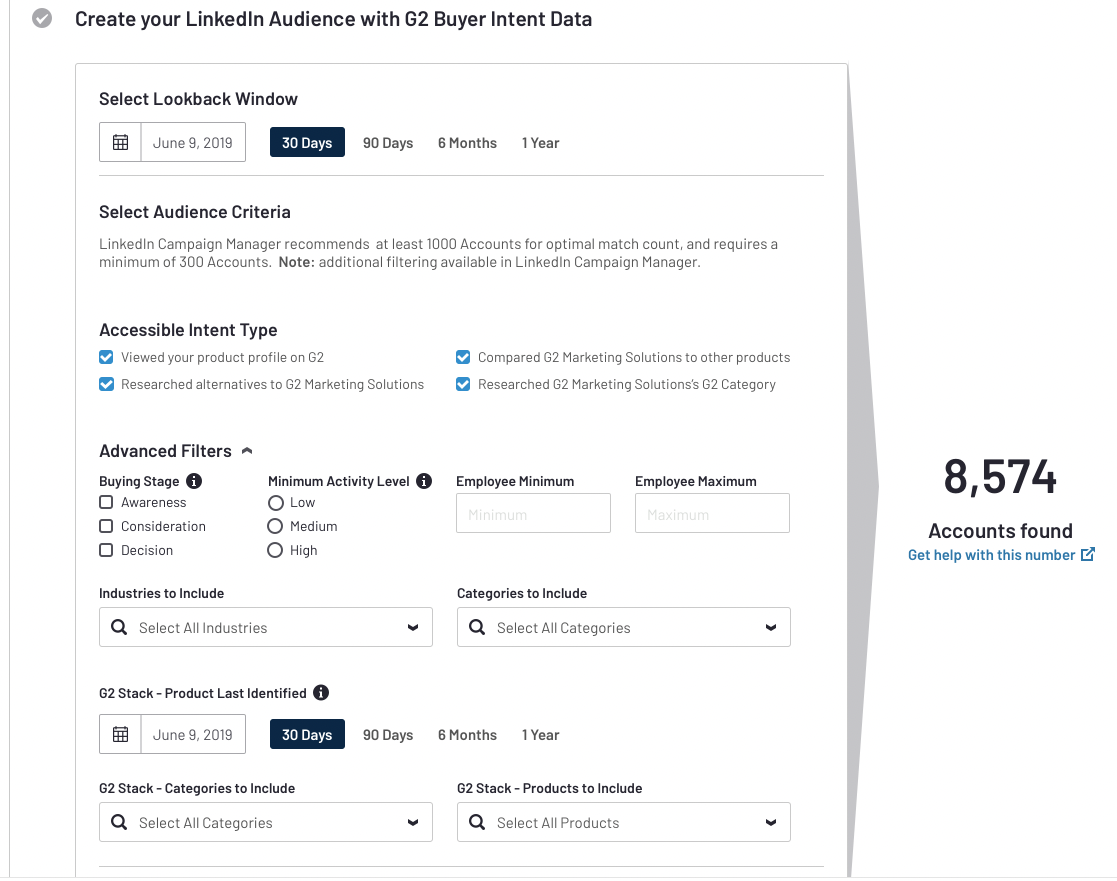
Source: G2
For example, you can start by running "cheap" aircover display campaigns to create awareness and engagement with your target accounts. These campaigns can be cost-effective and help you generate initial interest. Once you have identified accounts with demonstrated intent, you can then retarget them using channels with higher Cost Per Click (CPC), such as LinkedIn.
By leveraging intent data, you can ensure that your retargeting campaigns are laser-focused on high-quality leads and maximize the return on your marketing investment.
6. Personalize messaging
When it comes to consuming content, we automatically gravitate toward the most relevant assets, right?
Well, your potential buyers are no different.
That's why personalization is so important in marketing as you want to make sure that your content is as relevant as possible to each potential buyer. And guess what? Intent data is the key to achieving that!
Here are a few examples of how you can use intent data to increase content relevance:
Website Personalization
One way to personalize your website is through dynamic keyword insertion based on competitive intent.
For example, if you position your product as a cheaper alternative to your competitors, you can personalize your landing page's H1 by inserting the competitor's name, making it look like "A Cheaper Alternative for [Competitor Name]." This way, when someone searches for a competitor's brand, they will see your website as a relevant and viable option.
Campaign Personalization
Another way you can use intent data is to personalize your campaigns.
For instance, since Account-Based Marketing (ABM) tools allow targeting accounts with different types of campaigns based on intent, when an account reaches a certain intent score (e.g., visits your website at least three times, downloads an asset, and engages with video ads), you can move it to the "Hot Intent" segment and include it in campaigns across various channels with specific messaging and special offers. By doing this, you can maximize the probability of conversion.
Here’s an example of an intent-based personalization framework used by one of our customers:
|
No intent |
Mid-funnel intent Website visits Ad engagement |
Hot intent Multiple website visits Pricing page visits Ad engagement Intent towards competitors |
|
Channels: programmatic display
|
Channels: programmatic display, LinkedIn |
Channels: programmatic display, LinkedIn, Facebook, email |
|
Messaging approach: make prospect aware of the problem
|
Messaging approach: establish your product as the solution to the problem |
Messaging approach: create a sense of urgency, differentiate from competitors |
|
Content: data studies, interviews with industry leaders |
Content: case studies and success stories, how-to guides |
Content: special offers, case studies and success stories |
7. Better Align Marketing & Sales
Did you know that 80% of leads generated by marketing never convert into sales?
There are several reasons why this happens:
- Marketing focused on metrics like CPC, number of leads or cost per lead, without looking into what happens with the leads further down the funnel
- Two teams using different tools, metrics, and scoring models in their processes
- Teams having different understanding of the ICP
This is where intent data can help tremendously.
By using intent data, both marketing and sales teams will know the engagement threshold required for outreach or retargeting initiatives. And it’s much higher than just downloading an e-book.
Here’s how this can look:
|
Stage |
Criteria |
Action item |
|
Low-intent accounts |
Low 3rd-party intent, no 1st-party intent |
Sales: don’t touch Marketing: warm up |
|
Medium-intent accounts |
Medium 3rd-party intent and 1st-party intent |
Sales: soft outreach Marketing: retargeting |
|
High-intent accounts |
Surging 1st-party intent |
Sales: reach out immediately with a limited time offer |
Furthermore, both teams will have a better understanding of the ideal customer that engages with the company's assets, as well as deeper insights into the entire buyer journey. Marketing teams can understand what happens after a form fill, while sales teams can gain insights into what precedes a successful outreach action.
With this shared understanding, both teams can work together more effectively to optimize the lead-to-customer conversion process.
By aligning better with sales and using intent data to inform their strategies, marketing teams can ensure that the leads they generate are more likely to be qualified and interested in the company's offerings, resulting in a higher percentage of closed deals and a stronger bottom line for the business.
Topics

